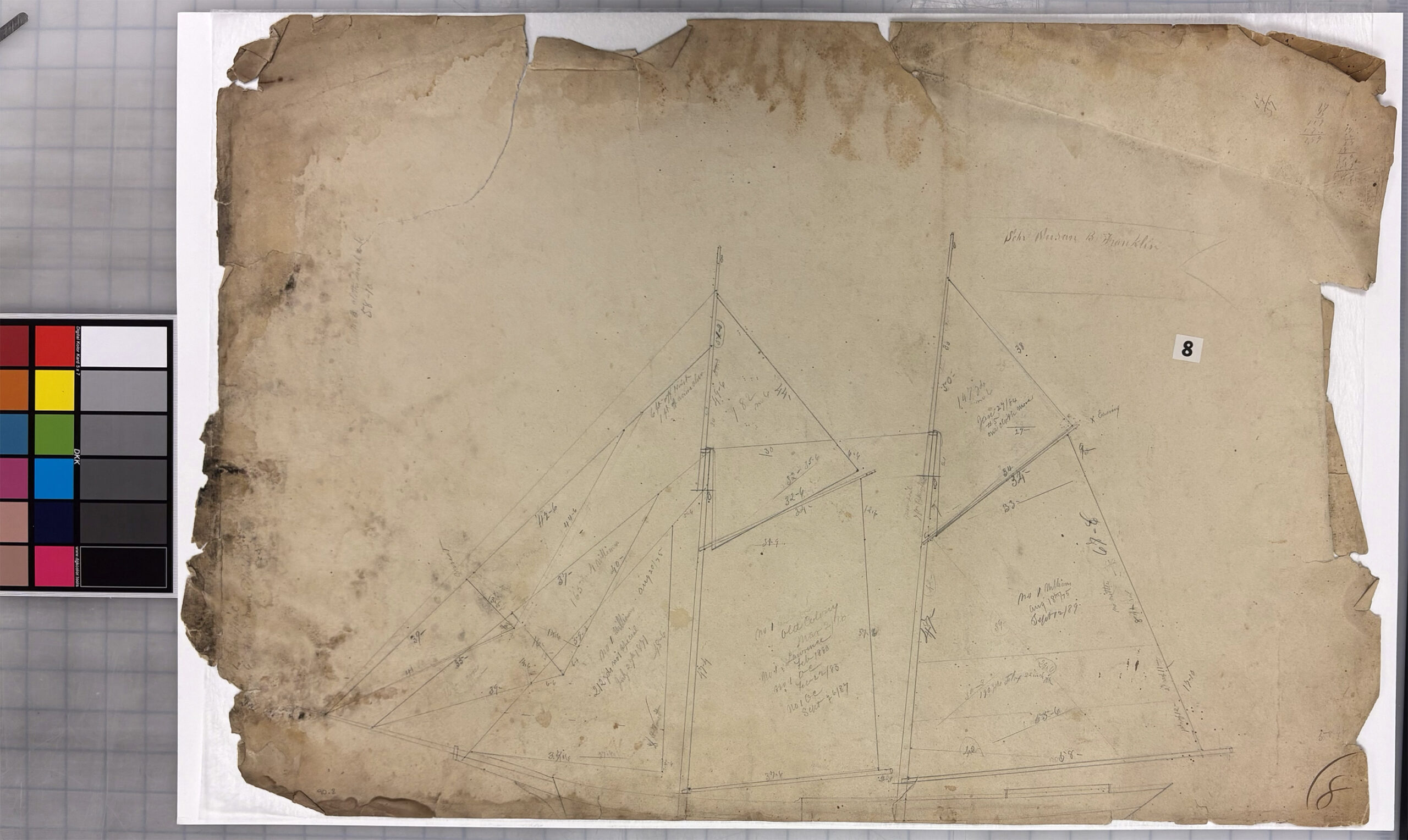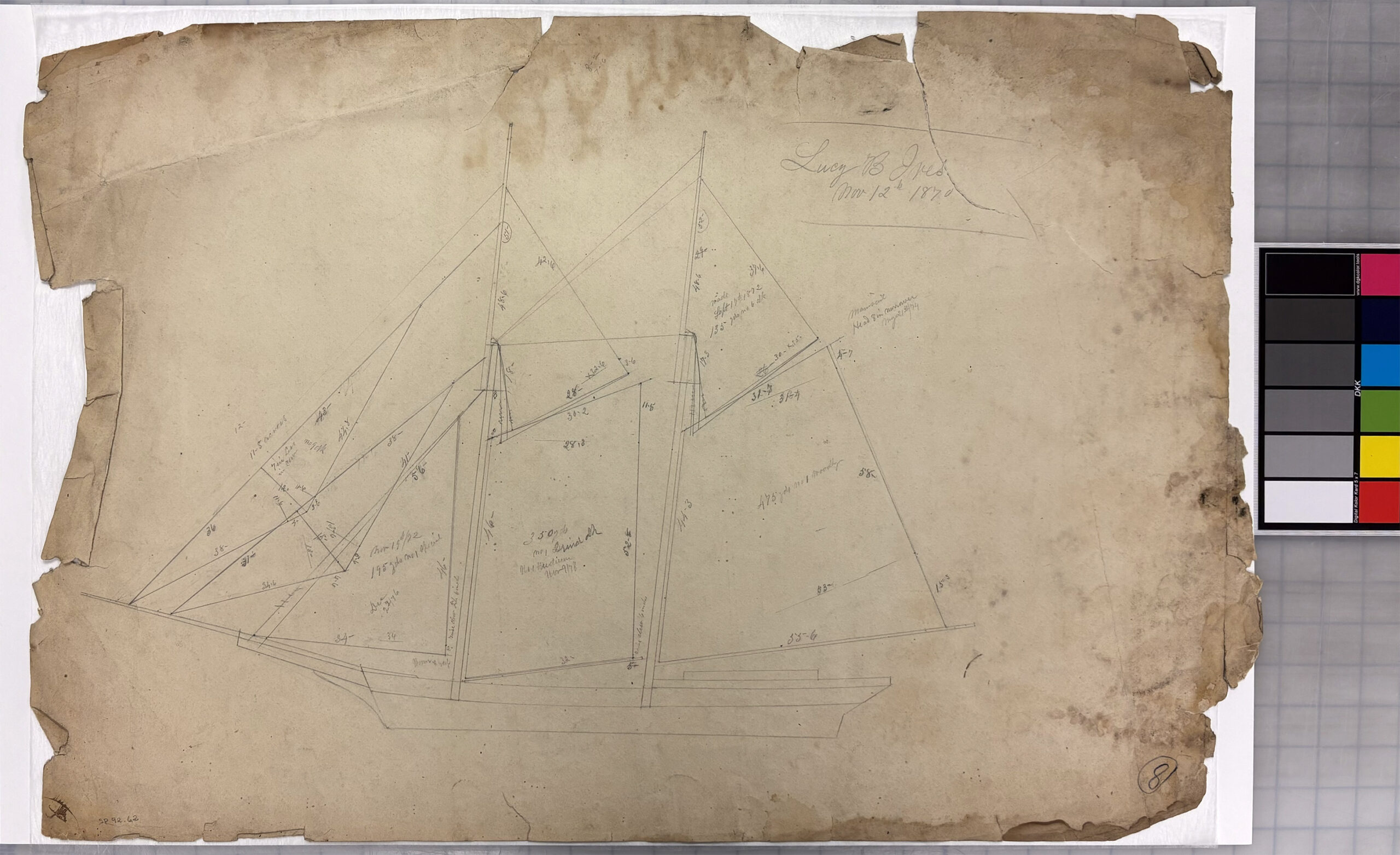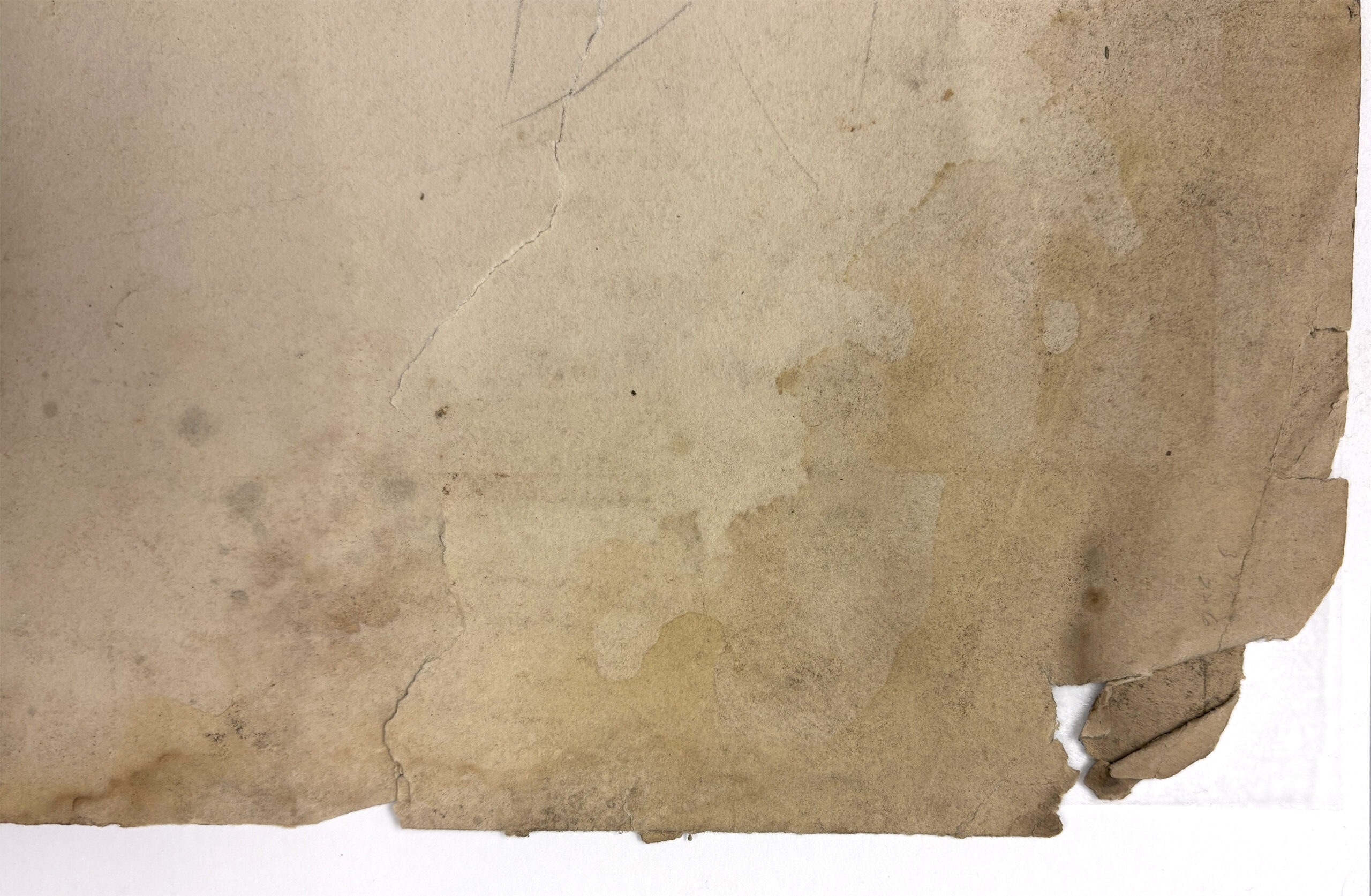The Mills Sail Plan Collection at Mystic Seaport Museum
In the 1992, William Mills II entrusted Mystic Seaport Museum with his family’s extensive collection of sail plans. What makes these plans so significant is that they represent the archives of the oldest sailmaking family in America—a business passed down through generations, remaining in the Mills family since its inception.
In 2024, Jamie, Bob, and Robert Mills donated additional sail plans, along with the archives of the family’s Cedar Island Oyster Company. What was once believed to be a modest oyster operation was revealed to be a much larger and more influential enterprise. William J. Mills had a close working relationship with Jacob Ockers, known as the “Oyster King of New York.” Mills succeeded Ockers in their joint oyster operations, and just before the shellfish industry collapsed in 1924, the Mills family sold their company.
Among the recently acquired materials is the bill of sale for the company’s remaining oyster assets, which included two New Haven sharpies and a commercial Ford truck. These documents offer a rare glimpse into the commercial maritime history of Long Island.
Through the Long Island Collection project, we are committed to preserving the Mills family’s legacy, including the invaluable sail plans.
A vivid memory underscores the fragility and importance of this preservation effort. When Bob Mills was in seventh grade, he was at wrestling practice while his parents were away, and a fire broke out in the buildings adjacent to the family loft. Jamie was away at college at the time. Bob rushed to the scene after hearing the fire horn the distinct code that volunteer firefighters—like many in the Mills family—recognized as the signal for the loft’s location. When he arrived, an employee assured him, “Don’t worry—we got everything out.”
Thankfully, the sail plans survived the fire, though they still bear the marks of soot and water exposure. Our mission now is to stabilize these historic works on paper and ensure they remain accessible to future generations of researchers, historians, and maritime enthusiasts.
Before treatment



After treatment – to come . . .